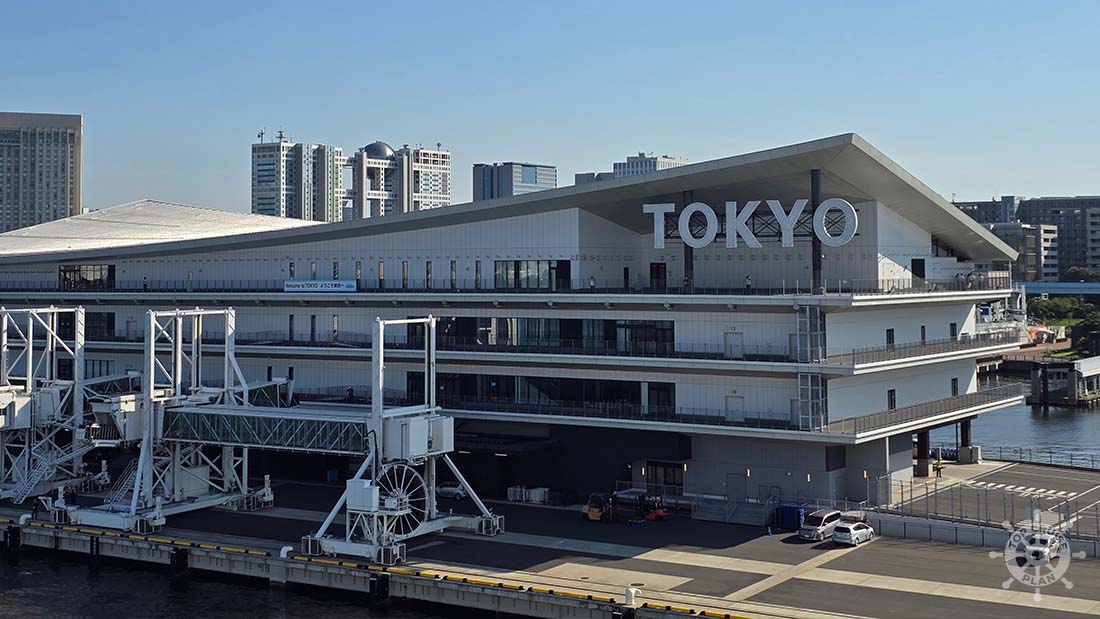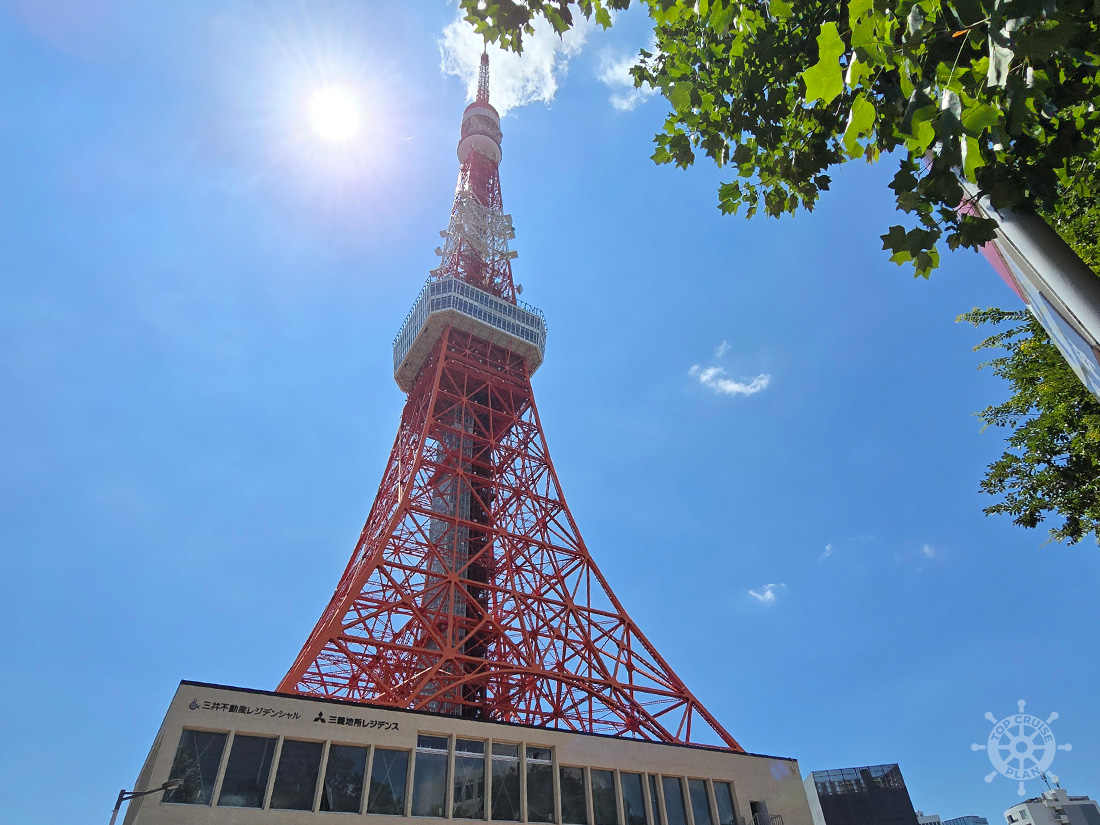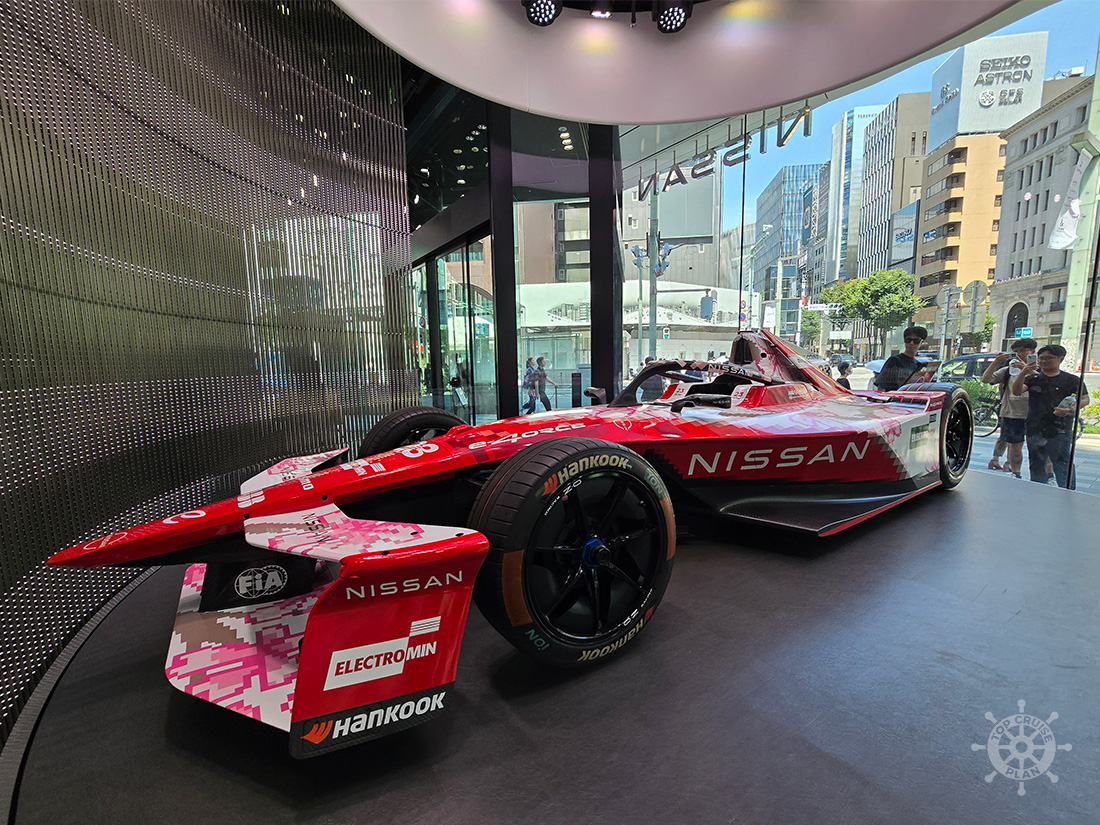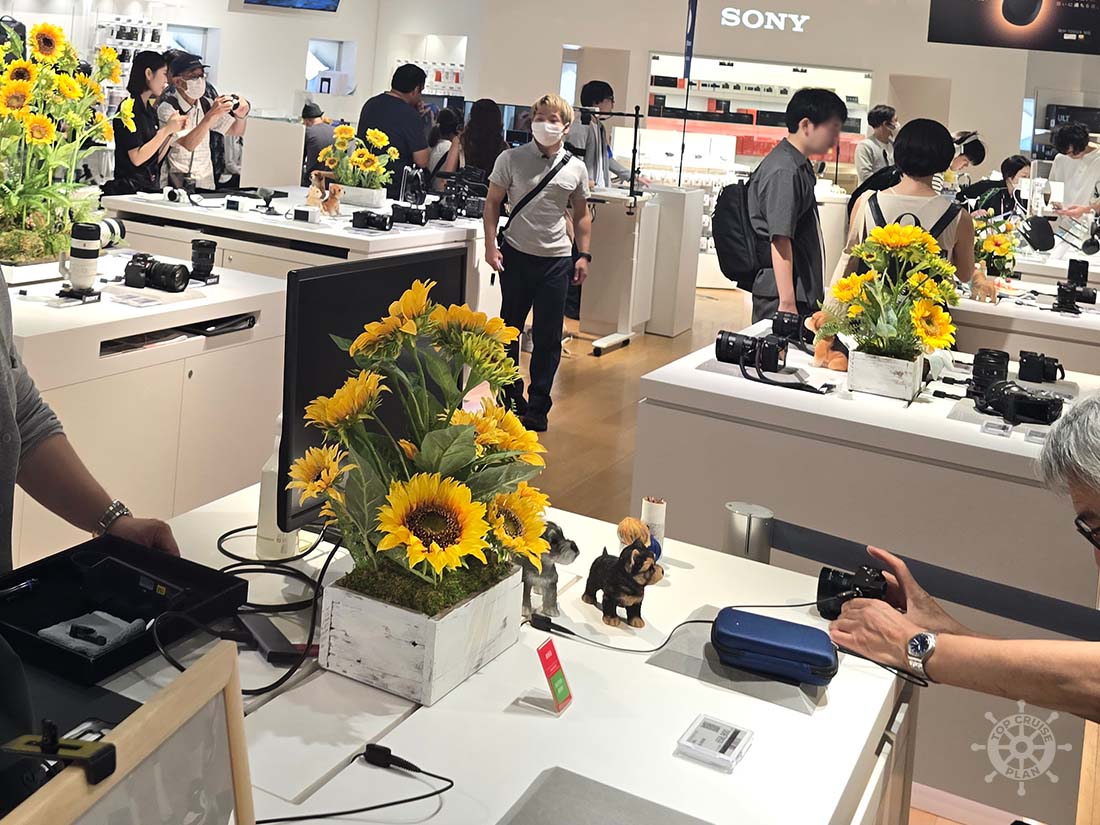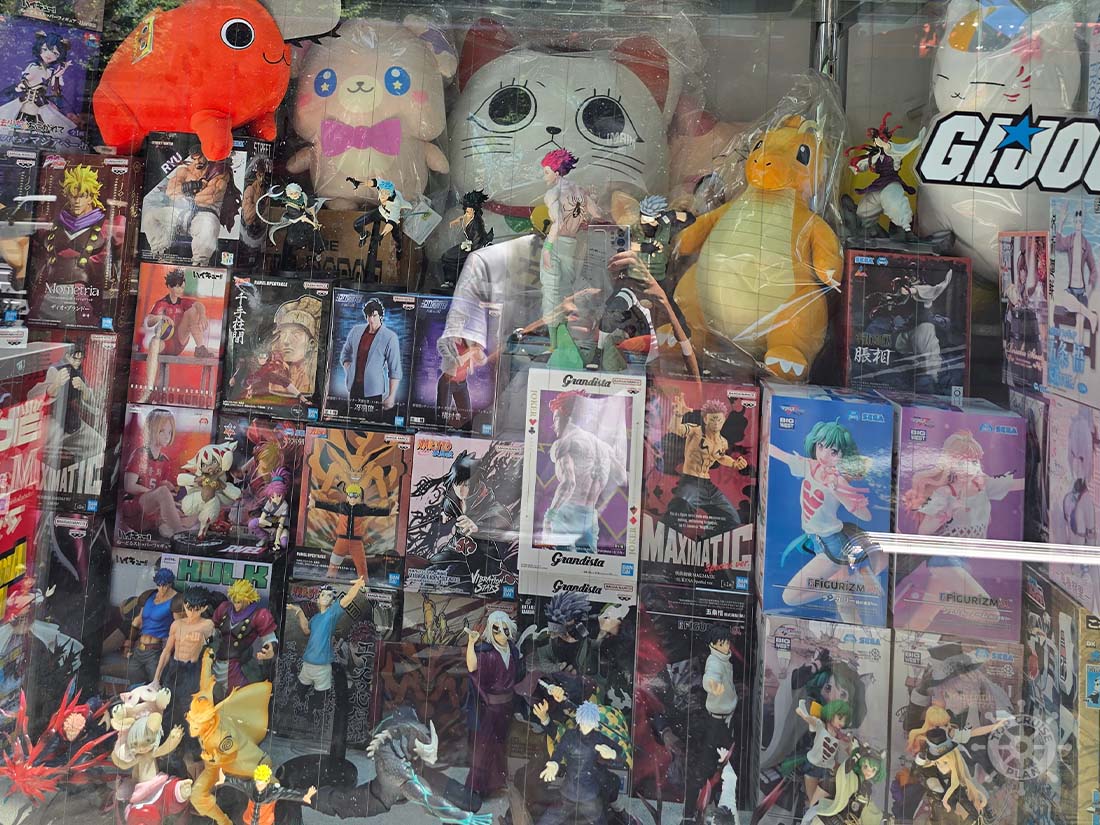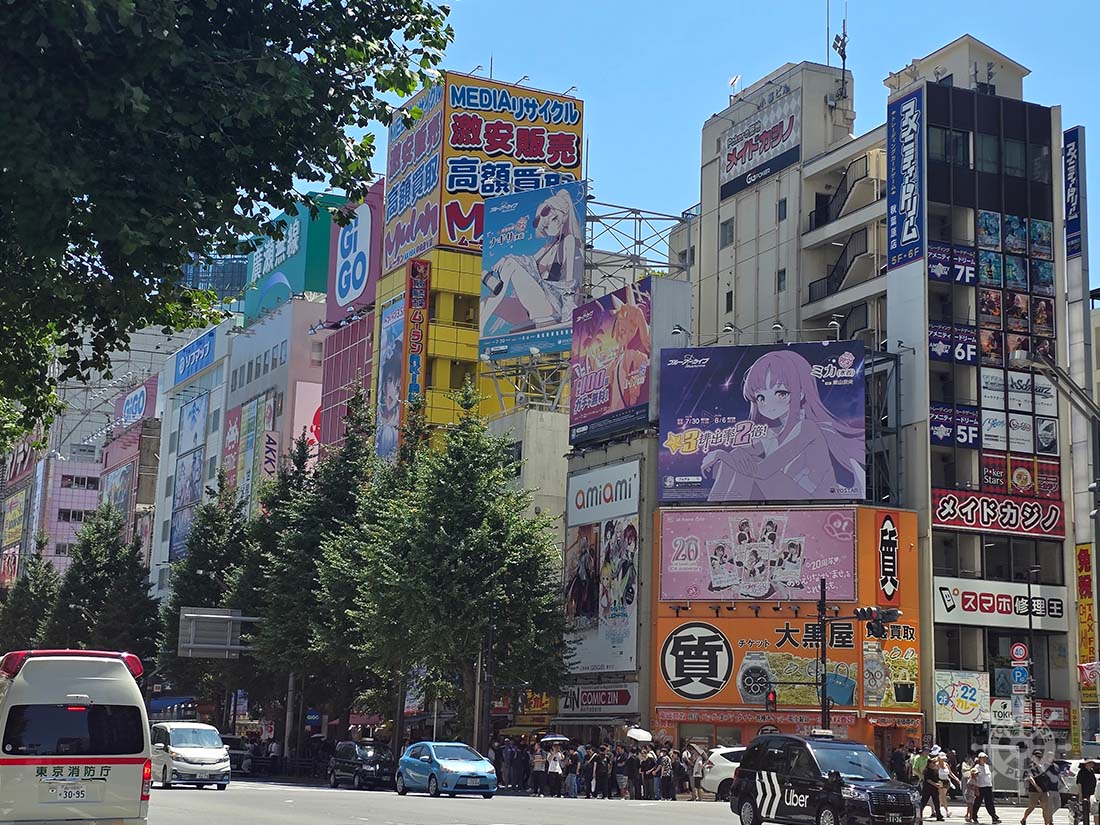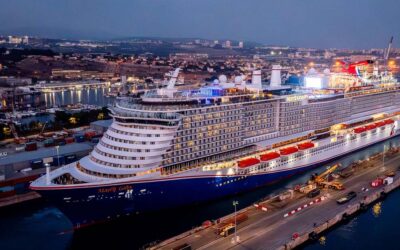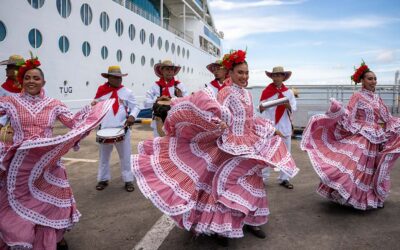Welcome to a new article in the series about our experience in South Korea and Japan aboard a cruise. After visiting Shimizu and Mount Fuji, today we arrive to Tokyo.
Arriving in Tokyo by cruise ship is a spectacle of urban immensity and order. As the ship navigates through the bay, the horizon transforms into a dense silhouette of skyscrapers that seems infinite. The entrance to the port—in our case, the Tokyo terminal—reveals a fascinating mix of industrial giants, cranes and iconic bridges like the Rainbow Bridge. The ship glides smoothly between maritime traffic while the world’s largest metropolis welcomes you. It’s a visual introduction to the power and energy of a city where tradition and future converge.
The Rainbow Bridge is one of the most iconic images of arrival. During the day its elegant white silhouette stands out; at night it lights up with the rainbow colors that give it its name. Seeing it from the ship’s deck is the perfect welcome postcard to Tokyo.
A 3-Day Plan
Tokyo, Japan’s capital, is the world’s most populated metropolis, with over 37 million people in its metropolitan area. It’s a center of contrasts where tradition and ultra-modernity coexist.
Exploring Tokyo is traveling through multiple cities in one, each defined by its vibrant and unique districts. Shinjuku is the face of modern, business Japan. To the west of its colossal station—the world’s busiest—rises a forest of skyscrapers, including the Metropolitan Government Building with its panoramic views. To the east, the atmosphere changes completely, offering the intense nightlife of the Kabukicho district and the small bars of Golden Gai.
Shibuya is the epicenter of youth, fashion and trends. Its iconic pedestrian crossing is a perfectly synchronized human tide. Shibuya’s streets are packed with shopping centers, cutting-edge boutiques and music venues that set the pulse of pop culture.
For a journey to the past, Asakusa offers the atmosphere of the “shitamachi” or old Tokyo. The majestic Sensō-ji temple is its heart, accessed through the traditional shopping street Nakamise-dori. It’s a haven of history and spirituality. In contrast, Ginza is the epitome of luxury, with its haute couture shops, art galleries and elite restaurants, while Akihabara, the “Electric Town,” is paradise for manga, anime and technology lovers.
The last stop of our cruise was Tokyo. We arrived first thing in the morning, would spend the night on the cruise ship that day, and the next day would be disembarkation. That night we could return to the ship whenever we wanted, so we had no stress about return times. Additionally, we decided to sleep an extra night in a hotel in Tokyo—specifically in Shibuya—to have more time to visit the city. Since our plane left the next night, we had almost three full days to visit Tokyo.
When planning these three days, we thought about doing it based on proximity to where we were sleeping and convenience. The first day we visited the districts closest to the port and at the same time farthest from our hotel in Shibuya. We left what was closest to it for the day of our flight departure to Spain.
This is how we structured these three days, which in this series we’ll divide into two separate articles given the amount of information and details we want to share:
Part 1 – Day 1 (this article): Ginza, Akihabara and Asakusa
Part 2 – Days 2 and 3: Meiji Temple, Shibuya and Kabukicho
Tokyo Tower
Once the cruise arrived at the port, we disembarked as soon as possible. Everyone seemed eager to see the famous city of Tokyo. We thought that since we wanted to see many things, it would be best to take a taxi to Ginza. When we arrived we saw that the shops hadn’t opened yet—it was around 9:30 in the morning. So we took the opportunity to go to a metro station and get a 48-hour pass that worked wonderfully for us, as the distances are great. Our first destination was the iconic Tokyo Tower. When we left the station we went into a café to take a break. It’s worth mentioning that in Tokyo there are quite a few cafés and they make good coffee.
After coffee we resumed our march. On the way we tried to go to a museum called “teamLab Planet.” A surreal place where mirrored walls, floors and ceilings create the illusion of infinite, boundless space. You’re surrounded by thousands of LED lights, hanging crystals and lamps that change color and intensity, often reacting to your movement. It’s a sensory and highly photogenic experience that fuses art and technology. This museum wasn’t within our priorities, but having a bit more time we decided to try. As expected, it was full for the time we wanted to enter. These types of attractions, whenever possible, should be booked in advance. That’s why we decided to go straight to our first objective: seeing Tokyo Tower, which was very close.
Tokyo has two iconic communications towers that dominate its skyline. The main one currently is the Tokyo Skytree, a modern structure at 634 meters—Japan’s tallest. Since 2012 it’s been the nerve center for television and radio broadcasting in the region. On the other hand stands the classic Tokyo Tower. With its 333-meter design inspired by the Eiffel Tower, it was the symbol of Japan’s post-war reconstruction. Although now a secondary tower, it remains a beloved icon. There’s an exact spot that shows you where to position yourself and rest your phone for the perfect photo. Meanwhile the morning progressed and we returned to Ginza.
Ginza
Ginza is Tokyo’s most luxurious and sophisticated district, a dazzling showcase of opulence and design. Its main artery, Chuo Dori, houses boutiques of the world’s most prestigious brands: fashion, jewelry and technology. It’s also home to iconic department stores like Wako, with its famous clock, and Mitsukoshi.
On weekends, the street becomes a “pedestrian paradise,” closing to traffic and filling with visitors. Ginza isn’t just shopping; it’s a cultural center with numerous art galleries, exclusive restaurants and refined nightlife.
We visited NISSAN CROSSING, an emblematic showroom of the brand. Located in the iconic Ginza Place building—whose white panel façade is a work of art in itself—this space is much more than a car showroom.
NISSAN CROSSING functions as a cutting-edge gallery where visitors can explore the future of mobility. It exhibits everything from the latest production models to spectacular concept cars and historic prototypes. With interactive displays, simulators and futuristic design, it offers an immersive experience that connects Nissan’s technology, design and innovation. We really enjoyed the experience.
We also visited the Sony Store in Ginza, which occupies several floors of the modern Ginza Place complex. It has a showroom ideal for experiencing Sony’s latest releases firsthand. Visitors can try cameras, headphones, televisions and other electronics products. On the upper floors is the store where products can be purchased. There’s also a small art gallery with photographic exhibitions.
In summary, the Sony experience in Ginza combines the possibility of interacting with the most recent technology in the Sony Store and, starting in 2025, the opportunity to immerse yourself in a unique cultural and entertainment space in the new Ginza Sony Park.
Afterward we strolled through Ginza’s streets and entered different shops. Our next destination before lunch was Akihabara. To get there we took the metro.
Akihabara
Akihabara, known worldwide as Tokyo’s “Electric Town,” is the epicenter of otaku culture and technology in Japan. Its streets are packed with neon lights and buildings adorned with gigantic advertisements of anime characters and the latest video games. Originally famous for its post-war electronics and computer component shops, Akihabara has evolved to become paradise for manga, anime, collectible figures and video game enthusiasts.
Walking along its main artery, Chuo Dori—especially on weekends, when it closes to traffic—is immersing yourself in a unique universe. Multi-story shops like Yodobashi Camera, Animate or Mandarake offer an overwhelming selection of products. Beyond shopping, the Akihabara experience isn’t complete without visiting its iconic maid cafés, where waitresses dressed as maids serve customers with theatrical hospitality.
Arcades, rooms full of gachapon machines (capsule toys) and idol events complete the atmosphere of this fascinating and energetic corner of Tokyo, a pilgrimage site for fans from around the world.
We entered many shops, attracted by the unique themes you don’t usually find elsewhere. We also went to these rooms full of gachapon machines, until we were exhausted from so much walking.
Lunchtime arrived and we returned to the ship to rest a bit before going back to the city in the afternoon. On the metro we got off at the wrong stop and ended up having to take a taxi back to the ship. Later in the afternoon we went to visit Asakusa.
Asakusa
That afternoon we headed to the Asakusa district. Upon leaving the ship, we took a train to a metro station and from there continued to our destination. Our plan was to attend a fireworks festival, stroll through the streets and visit Senso-ji Temple. The metro was packed with people—so much so that the station stairs were completely jammed.
Once on the street, people sat on the ground to watch the show. Several streets were closed to traffic. The festival consisted of launching a fireworks display, pausing, then another, repeating several times. From there you could observe the impressive modern Tokyo Skytree tower.
Asakusa is the heart of the most traditional Tokyo and one of the metropolis’s most charming and historic districts. This neighborhood preserves the atmosphere of the old “shitamachi” (lower town) and offers a fascinating journey to the past. The undisputed epicenter of Asakusa is the majestic Senso-ji Temple, Tokyo’s oldest and most venerated Buddhist temple.
The visit to Senso-ji Temple begins by crossing the imposing Kaminarimon Gate (Thunder Gate), with its iconic red lantern nearly four meters high. Next extends the lively Nakamise-dori street, a 250-meter market flanked by stalls selling handicrafts, fans and traditional sweets. This bustling path leads to the second gate, Hozomon, which houses two fierce statues of guardian deities.
Once in the main courtyard, to the left rises the impressive five-story pagoda, a symbol of Senso-ji’s resilience and timeless beauty. The Five-Story Pagoda of Senso-ji Temple is one of the complex’s most impressive and photogenic structures. At approximately 53 meters tall, it’s Tokyo’s second tallest pagoda and a central element of the temple’s landscape.
There were lots of people—I don’t know if it was because it coincided with the fireworks show or because it’s normally that crowded. Either way, we loved everything we saw. Tokyo truly is amazing.
The day went on like this until it got quite late. Also, we were very tired because we’d spent almost the entire day walking. We decided to return to the ship, but exhaustion got the better of us and instead of taking the metro we took a taxi.
Back on the ship, since we’d missed dinner time at the restaurants, we went to a café to eat. It was curious to see the tired faces of people returning to the ship—I imagine the same look we must have had.
Coming soon: a new article and the final chapter of our journey with Part 2 – Days 2 and 3: Meiji Temple, Shibuya and Kabukicho

